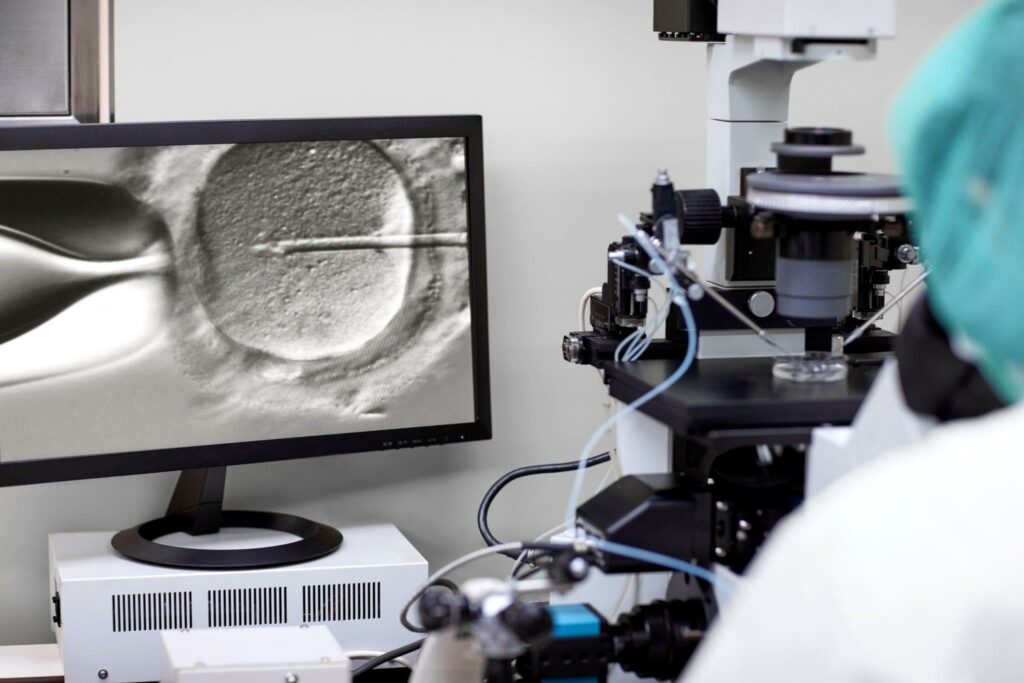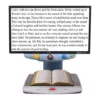Over 10 million Americans suffer from macular degeneration, the most common cause of visual loss in the country. 200,000 new instances are identified each year.
Macular Degeneration: What Is It?
The macula, located in the center of the retina, begins to deteriorate, resulting in macular degeneration, an irreversible condition. The capacity to read, drive, see colors, and discern small details is provided by the macula, which is the important center of the eye. When deposits accumulate on the macula (as in dry macular degeneration), or when irregular blood vessels bleed on the retina, damage results (in the case of wet macular degeneration). Macular degeneration is mostly brought on by aging, although it may also be brought on by heredity, race, and smoking.
Macular Degeneration Symptoms
Macular degeneration may cause visual loss or impairment as well as hazy, distorted, and spotty vision. Because individuals with macular degeneration still have their peripheral vision, it may be frightening to lose their central vision.
Macular degeneration treatment
The removal of aberrant deposits from the eye or laser therapy to destroy the abnormal blood vessels are two treatments for eye disease. With vitamin treatment, some patients have seen some relief or at the very least a slowing of their symptoms. Although these therapies provide temporary relief, they do not fix the underlying problem, and patients are still left with visual loss.
Patients with macular degeneration are treated at Stem Cell Centers using SVF stem cell treatment administered intravenously. Once the stem cells have been introduced, they start working right away to repair injured tissue. Similar to how they do in other parts of the body injured by illness or injury, stem cells use growth factors to speed up the healing process and regenerate cells to repair damaged eye tissues. Read What are Stem Cells in our blogs to learn more about stem cells. and Recognizing Stem Cells Derived from Adipose Tissue.
At these Stem Cell Centers, patients who received stem cell therapy for macular degeneration and other eye disorders have had some encouraging outcomes.
What are Stem cells?
Although stem cells have revolutionized medicine, many people are still uninformed of how crucially important they are to the management of diseases and chronic conditions. Because there are several methods for obtaining stem cells and numerous medical therapy options, the word “stem cell” still has a lot of negative connotations.
Some of the most distinctive cells in the body are stem cells. This is so because stem cells have two capabilities that other cells lack:
Stem cells may proliferate.
Stem cells may differentiate into different cell or tissue types.
This indicates that a variety of different forms of damaged tissue may be repaired by stem cells. In actuality, stem cells carry out the majority of the body’s healing processes. The injured cells in your sliced finger emit unique molecules called growth factors. In the surrounding tissue, latent stem cells are activated by growth signals, and these cells subsequently create new skin cells to repair the lesion. The stem cells revert to dormancy after the injury has healed.
We can cure illnesses and injuries that have defied prior therapies by boosting the body’s capacity to activate stem cells and sending them to the site of harm. Stem cells have the unique capacity to produce a limitless number of fresh, healthy cells in the areas of the body where they are required since they can duplicate themselves and fundamentally change into other kinds of cells. Therefore, stem cell treatment creates new, healthy, and functioning cells to replace or repair weakened or damaged cells.
Different sources of stem cells
Stem cells may be found in a variety of places, including bone marrow, fat, and embryos as well as the umbilical cord blood. The most taboo blood sources are embryos and umbilical cords, thus adult bone marrow or fat may be used to get stem cells instead. They are a direct result of the patient’s therapy. These are also known as adult stem cells from adipose tissue.
Compared to bone marrow, fat may generate a lot more stem cells in a single treatment. Around 60,000 stem cells are typically obtained from a bone marrow harvest. 10-30 million stem cells or more may be produced from a single 25-milliliter injection of fat. The two kinds of cells have highly comparable traits and therapeutic potential, according to studies. As a result, fat is the simplest and most reliable source of stem cells for use in the future.
Can someone else’s stem cells be harvested?
Allogeneic stem cells are stem cells derived from different individuals. These are often obtained from newborn babies in the form of amniotic fluid, umbilical cord tissue, or umbilical cord blood. It is important to remember that although amniotic fluid is low in stem cells, it is high in growth factors. Whether cells from a younger person may aid in healing more than cells from an older person is a matter of some debate. Receiving stem cells from other individuals carries significant risk, regardless of where the cells are coming from.
These consist of:
- Possibility of undiscovered genetic diseases being transmitted from the donor
- Possibility of the donor spreading an infectious illness, particularly if the donor is from another nation
- Your immune system could reject cells from someone else.
- The danger of having someone else’s cells proliferate in your body for a long time is unknown.
Who is an ideal patient for stem cell treatment?
For many individuals, stem cell treatment is a fantastic choice, but it’s not appropriate for everyone. Candidates for stem cell treatment are not those who have an active malignancy or a serious illness. You will need to be able to cease taking any drugs, such as anticoagulants (blood thinners), for two to four days before the surgery. Blood thinners may sometimes be used with care, but you’ll need to talk to the doctor about that.
Blood thinners may sometimes be used with care, but you’ll need to talk to the doctor about that. Who are the ideal candidates for stem cell therapy?
- Clinically healthy patients
- Those who have unsuccessfully tried other therapy
- Patients with ongoing illnesses
- Patients seeking enduring relief from persistent symptoms
- Those suffering from neurological conditions
- Alzheimer’s or Parkinson’s patients
- The price of stem cell therapies
The first treatment might cost anything from $5,000 and $10,000. The difficulty of returning the cells to you determines the price range. For instance, spine disorders need the use of many doctors to send the cells back to your body, which raises the expense of the surgery. Many patients just need the first course of therapy. Subsequent treatments, on the other hand, may be necessary for certain illnesses and are provided at a reduced cost.
Costs for stem cell therapy for macular degeneration
In order to estimate the price of stem cell therapy, a website called BioInformant requested that readers who have had stem cell therapy email in information on their out-of-pocket expenses. Many people submitted their medical bills (with personal details retracted). They also ran a poll on Twitter, which got a ton of answers.
The survey found that 30% of those receiving stem cell therapy paid $5,000 or less, and 20% spent $5,000 to $10,000.
10% to $25,000 was spent by 40%
10% spent more than $25,000.
For stem cell therapy for age-related macular degeneration, studies are still being conducted and it’s not something that is widely available yet. Therefore pricing isn’t readily available. Retinal surgery is a delicate procedure and will likely not be cheap.
Other Dry AMD Treatment Options Using Stem Cells
For the treatment of degenerative eye conditions such as dry AMD, stem cell therapy offers considerable promise. There are two ways that cell replacement therapy for AMD patients may enhance their condition:
RPE and photoreceptors that are malfunctioning may be revived by substances released by healthy transplanted cells, or dysfunctional cells can be replaced by healthy cells.
Preclinical studies suggest that both of these elements are likely involved in the beneficial benefits of stem cell transplantation. Since the RPE is the primary site of disease development in the early stages of dry AMD and photoreceptor function is still mostly intact, treatment plans may concentrate on correcting RPE dysfunction, which is very simple to do.
RPE transplantation is a reasonably simple and direct method for direct cell replacement therapy in the eye. It is possible to generate RPE with structural and functional characteristics to the RPE seen in the eye from stem cells. After being transplanted, this RPE fuses with the host retina and maintains photoreceptor functioning, proving that it accurately replaces the damaged RPE. Preclinical studies credit the survival and usefulness of transplanted RPE for the increased visual function attained in their trials.
How will stem cell therapy for dry macular degeneration be done?
For the therapy, surgeons at Columbia University – NY Presbyterian Hospital under the direction of Stanley Chang, MD, Stephen Tsang, MD, and Tongalp Tezel, MD, will implant a specially designed patch behind the retina with healthy (RPE) retinal pigmented epithelial cells (the cells that are lost in the disease) created by NYSCF scientists.
The National Eye Institute at the National Institutes of Health’s Kapil Bharti, Ph.D., developed a technique that will be utilized to make the RPE patches. This technique is presently being employed in a clinical study where patients with AMD are enrolled. CellRay LLC, a wholly-owned subsidiary of New York Stem Cell Foundation, Inc., has signed a collaborative research and development agreement and obtained a license to use Dr. Bharti’s protocol, enabling our scientists to take advantage of Dr. Bharti’s extensive preclinical work to speed up the clinical trial schedule. Since the patient’s own cells are used in this “autologous” cell treatment, there is less chance that the immune system would reject the transplant.
Current State of Dry AMD Stem Cell Treatments
RPE replacement techniques are the mainstay of the stem cell-based therapy for dry AMD currently available. RPE replacement may improve visual functional impairments by restoring photoreceptor functioning since the RPE supports photoreceptors. It has been tried to create iPSCs from a patient’s own cells in order to lessen the immunological problems that come with transplantation. Studies on individuals with AMD have shown that transplanted cells survive in the host eye and enhance visual function. Most significantly, none of these patients had any negative outcomes like transplant rejection or tumor growth.
The Potential of Stem Cell Therapies for Patients with Dry AMD
A prerequisite for late-stage AMD patients whose vision is reduced due to extensive photoreceptor loss, photoreceptor replacement treatment has not yet been established, despite RPE replacement therapies showing promising outcomes in AMD patients.
Photoreceptor transplantation research has been carried out by several organizations in animal models, however, there is not enough evidence to use this strategy in human clinical trials. The survival and functioning of photoreceptors need a more challenging strategy to achieve success than the RPE.
Recent research on stem cells dedicated to developing photoreceptor cells and retinal tissue generated in 3D from stem cells that is appropriate for grafts have shown promise in preclinical experiments. This research showed how these techniques are safe, effective, and have the potential to prevent blindness.
Conclusion
The use of RPE transplantation alone as the only component of the dry AMD patient’s stem cell replacement treatment is now showing significant potential. A number of research teams are currently working to transform this method into standard therapeutic treatment. Before a stem cell treatment that restores the RPE and photoreceptors for advanced-stage dry AMD can be completely developed, there is still considerable work to be done.
As more clinical trials are completed and the amount of risk and surgical procedures are defined and the amount of follow-up is determined, the price ranges will be more easily determined.
FAQ’s
Is insurance going to fund stem cell therapy?
Do insurance policies cover stem cell therapies? The simplest answer is no, however, there are various circumstances in which there may be coverage of some type.
Is stem cell treatment financially viable?
Is stem cell therapy financially worthwhile? In regenerative medicine, stem cells are increasingly often employed. As a result, stem cell therapy is an effective procedure with several advantages that make the cost justifiable.
How long is stem cell treatment effective?
The duration of pain reduction after stem cell therapy for knee, back, shoulder, and joint pain might vary. A number of trials employing stem cells as an arthritis therapy have shown benefits that persist anywhere between six months and many years.
Since stem cells for macular degeneration cell therapy are still in clinical trials, long-term results are still unknown.















